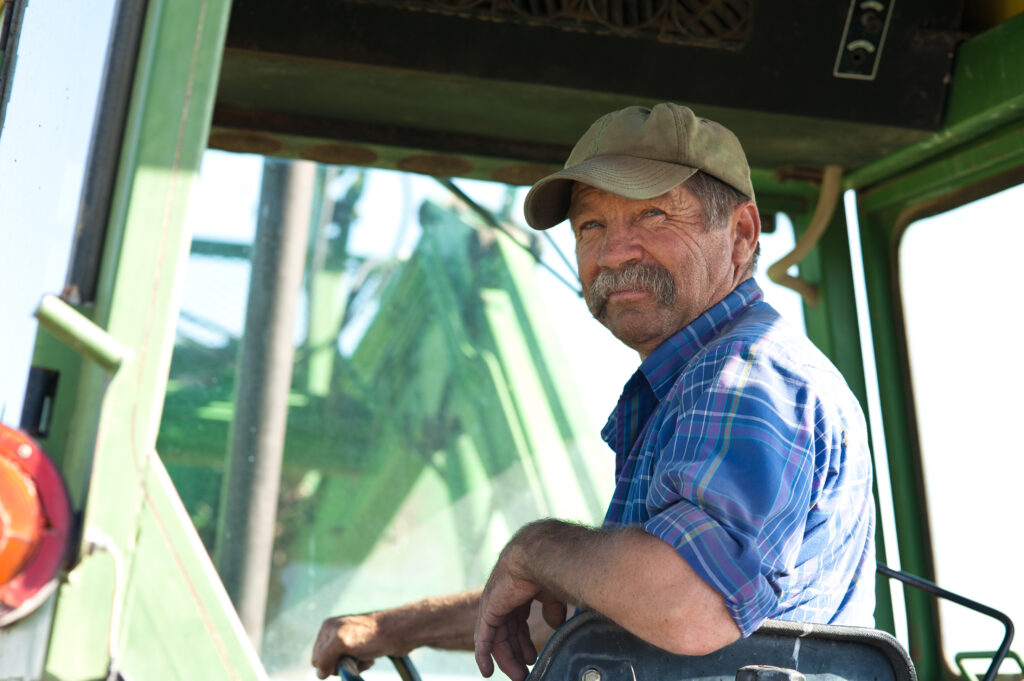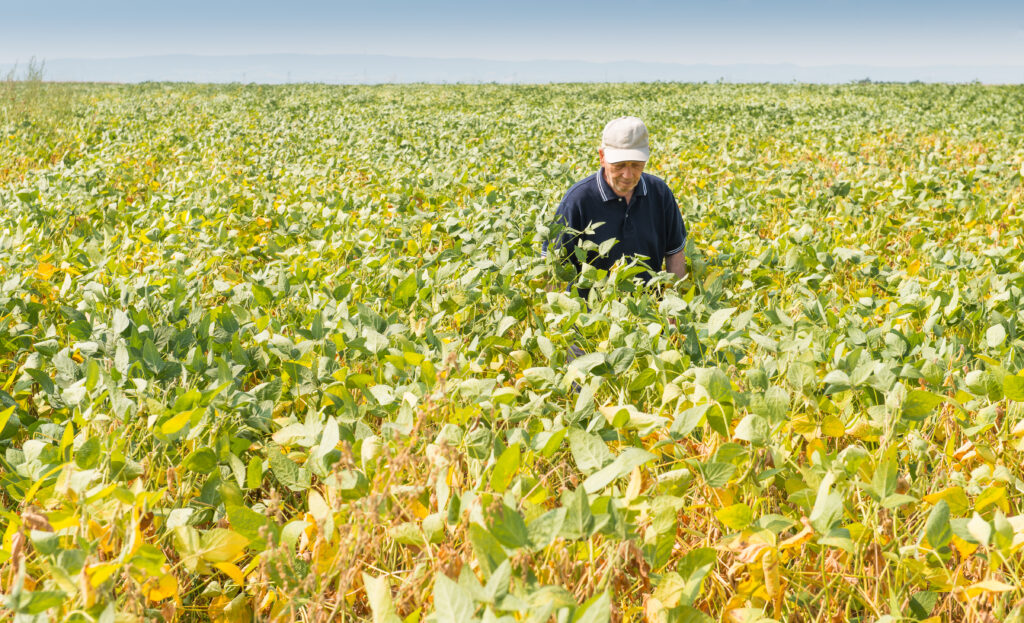It’s been exactly 100 years since the Packers and Stockyards Act — America’s first law protecting livestock and poultry producers from abusive meatpacking companies — was passed. So how is it that we are still grappling with some of the largest, most exploitative meatpacking monopolies in history today? We live in an age where farmers, ranchers, poultry growers, and others who raise the animals we eat, struggle with crippling debt and fear of retaliation for speaking out against harmful, unfair treatment.
This was supposed to be a part of the past, and for a time it almost was. A multi-part political saga has played out over the past century, with livestock and poultry producers and rural communities caught in the middle of a tug of war that has had very real consequences for everyone involved, except the corporations pulling the strings.
This blog post is about the struggle surrounding the Farmer Fair Practices Rules. The version of these fair practice rules put forward in 2010 added definitions and backbone to the original Packers and Stockyards Act, but corporate influence on our political process has prevented most of these rules from being made law. If enacted in their full form, the Farmer Fair Practices Rules would finally give livestock and poultry producers real protection against massive meatpackers, shifting the balance of power into hands of producers and giving them legal ground to stand on.
Understanding the Farmer Fair Practices Rules means understanding the history of antitrust laws in America, how they have impacted producers, and why this all matters. The fight for producer protections has been complicated, long and ongoing. Because of its lengthy history you may also hear this struggle referred to as “strengthening the Packers and Stockyards Act” or “GIPSA rules.” And in the future it may be called by another name, but it is all the same fight to bring justice to our food system.
The purpose of this post is not to recreate the many resources already out there. Instead we aim to be a one-stop-shop guide to the basics of the Farmer Fair Practices Rules, with supplemental resources, allowing you to decide how deeply you want to engage with this topic. Are you up for the challenge?
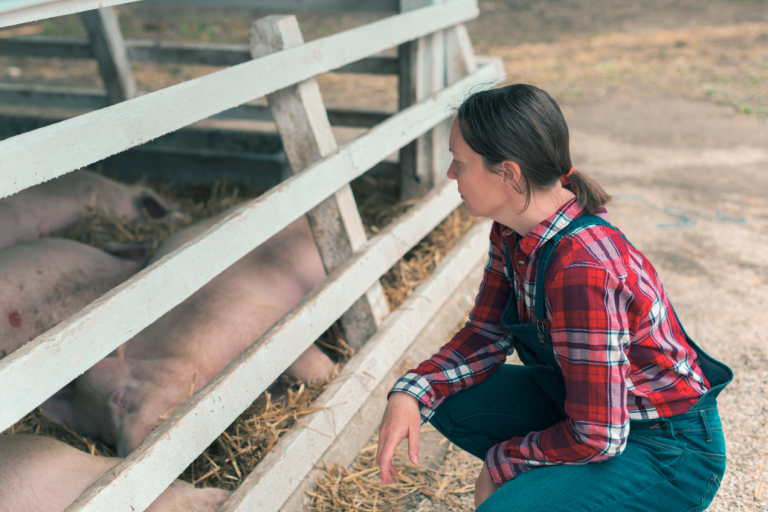
Definitions
The first stop on our journey is definitions. You can use these as a reference when exploring any of the resources out there, or take them at face value, using them to gain understanding of how all of the pieces of this puzzle fit together.
Key Players
Meatpackers: Companies that slaughter and process livestock and poultry. Meatpackers can buy livestock and poultry from independent producers, and they can own their own livestock and poultry, contracting producers to raise them. Meatpackers enjoy the majority of selling power in their market, creating conditions ripe for price fixing and collusion. By creating a “bottleneck” in the supply chain, meatpackers also hold most of the buying power in a consolidated market, wielding the ability to dictate how much a producer gets paid for each animal. If producers speak out against unfair practices, meatpackers can offer them lower prices, or refuse to buy their livestock or poultry all together. Because of market consolidation, producers often have only one meatpacker within hundreds of miles they can sell to, leaving them with little opportunity if they were to get on a meatpacker’s bad side.
Integrators: These are the companies like Tyson or Smithfield who contract with producers to grow livestock or poultry according to their standard corporate method. Integrators deliver young livestock or poultry, feed, and veterinary supplies to contract producers. After the animals are grown up and ready for processing, integrators pick them up. Integrators own the livestock and poultry, and control their production at every stage, including meatpacking.
Contract Growers: The producers who provide the buildings and the labor to raise the livestock or poultry dropped off by integrators. Contract growers are financially responsible for keeping up livestock or poultry-raising facilities. They are expected to raise livestock and poultry in line with practices dictated by their integrators, which often means they have to foot the bill for expensive facilities upgrades. Many producers take out loans against their house and land in order to keep their contracts and meet the demands of their integrator. If they speak out against integrators’ practices, they can expect retaliation, or even the termination of their contract.
Tournament Pay System: Contract growers in one geographic area are grouped together by their shared integrator, but they don’t know who’s in their group. It could be their next door neighbor or their friend down the road. The integrator ranks each group of growers by who produced the most and meatiest livestock or poultry. The top ranked contract growers receive a bonus, while the bottom ranked receive a payment deduction. The integrator doesn’t have to pay a dime for this system: they simply take a top producer’s bonus from a bottom ranked producer’s pay. At every turn, the integrator is controlling who comes out on top, and who stays at the bottom. It’s important to note, the damage from this system isn’t just economic. The strength of rural communities is rooted in the practice of helping your neighbor. This system pits friends and neighbors against one another, tearing at the basic social fabric and resiliency of rural communities.
Key Laws and Agencies
Packers and Stockyards Act (P&S Act): Motivated by outrage sparked by Upton Sinclair’s The Jungle, this law was established in 1921 to protect livestock and poultry producers from unfair monopolistic market practices. The Packers and Stockyards Administration was established to enforce P&S Act laws that protected producers and hold abusive meatpackers legally responsible for unfair and exploitative practices.
Grain Inspection, Packers and Stockyards Administration (GIPSA): In 1994, the Packers and Stockyards Administration was merged with the Federal Grain Inspection Service, creating a new agency within the USDA: the Grain Inspection, Packers and Stockyards Administration (GIPSA). GIPSA then held the authority to enforce provisions of the Packers and Stockyards Act, but it underwent some damaging changes recently. In 2017, GIPSA was downgraded from being an independent agency in the USDA to being a part of the Agricultural Marketing Service Agency (AMS). It has since been renamed the “Packers and Stockyards Division” and has been buried as one of five programs within the AMS’ Fair Trade Practices program. In the past, GIPSA would ideally look at data on livestock, poultry and grain prices coming out of the AMS for anticompetitive corporate schemes like price fixing, with the authority to bring legal action if they saw a problem. Now, with the AMS in charge of GIPSA, it’s like the fox guarding the hen house. Read more about the gutting of the GIPSA agency in Food and Power by the Open Markets Institute.
The Farm Bill: Every five years, a new package of legislation that focuses on agriculture, rural development and nutrition programs (among other things) is passed. Funds from a farm bill heavily influence what our food system looks like. You can get into the details of what is included in a farm bill in this explainer by the National Sustainable Agriculture Coalition.
Farmer Fair Practices Rules (FFPRs): The 2008 Farm Bill, in response to years of pressure from farmers and ranchers, included a mandate from Congress that the USDA develop new rules to clarify the P&S Act for GIPSA to enforce. These new rules were called the Farmer Fair Practices Rules.
Key Ideas
Rider: A clause appended to a legislative bill, usually to secure a distinct objective. Riders play an important role in why the FFPRs are still not enforceable 13 years after the 2008 Farm Bill. From 2011 to 2015, appropriations riders said that FFPRs couldn’t be funded and therefore were not enforceable. A watered-down version of the rules were finally drafted without a rider in the final weeks of the Obama administration, the Trump administration quickly moved to throw the rules out before they became law.
Unfair Practice: Originally written in the P&S Act: when integrators, meatpackers, or any business buying or selling livestock or poultry, use “unfair, unjustly discriminatory, or deceptive practices” to decide if/how they will do business with a producer. As of now, the law does not contain a specific definition of what “unfair, unjust, or discriminatory practices” may look like. The FFPRs aim to add specific examples and definitions that would strengthen this protection.
Undue Preference: According to the P&S Act, integrators and meatpackers cannot treat producers differently if their production and facilities were the same quality as their neighbors. Maybe a producer joins a community organizing group, or chooses not to upgrade parts of their facilities that don’t impact production, or even speaks out to the public about some of the less favorable parts of the meatpacking business. The P&S Act says that it would be illegal for an integrator or meatpacker to punish a producer for these activities. Unfortunately, the P&S Act definition for undue preference is vague, and integrators and meatpackers found there were few actual consequences in giving preference to some producers while punishing others. Whistleblower protections that exist for the average worker do not apply to producers, even under a well enforced P&S Act. So avoiding any action that a meatpacker or integrator might not like has been a suffocating reality for producers over the past few decades. Punishments from meatpackers and integrators can be overt like refusing to buy their livestock or poultry, or the termination of a contract. They can also be more subtle, like providing a contractor with expired feed or lower quality livestock or poultry.
Contract Fairness: Making sure a contract is fully explained, negotiable for both parties, and isn’t deceptive.
Competitive Injury: A current legal standard established by the federal courts: in order for a producer to take legal action against an integrator or meatpacker, that farmer would have to prove harm to themselves AND prove competitive harm to the entire industry, which is basically impossible.
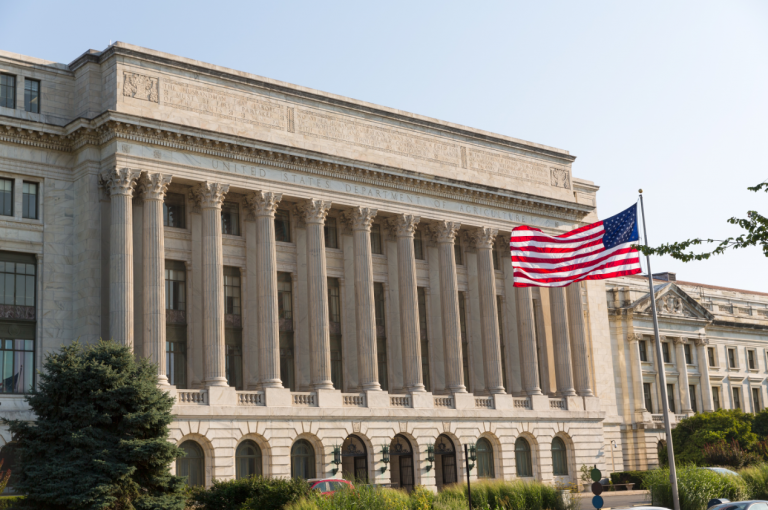
History and Context
The above list of definitions provides a lesson on the history of the Farmer Fair Practices Rules in itself. But a lot can happen in 100 years, and we’ve gathered the resources to help you take a deeper dive into the history and evolution of market safeguards and producer protections over the past century.
- This timeline from Food Integrity Campaign gives a comprehensive overview of the major events in the fight to enforce protections for producers. Most notably, the 1960’s to the present marked an era of ever-weakening enforcement of the P&S Act.
- Obama’s Game of Chicken: This article hits on the key points you need to know about how the recent fight for the FFPRs and its historical context. While its focus surrounds the failed efforts of the Obama administration to enact and enforce real protections for producers, you’ll find a sweeping overview of a political and economic climate — most notably the rise of Reaganomics — that caused monopoly packers to rise, fall, then rise again. In this article, the plight of the poultry producer takes center stage, but the exploitation of independent and contract producers remains similar regardless of what’s being produced. At the end of the day, the Obama administration’s efforts to address intimidation and abuse of producers not only fell short, they ultimately harmed producers who spoke out in hopes that the Farmer Fair Practice Rules would be enacted.
- In 1976, the four largest firms accounted for 25% of cattle slaughter, by 2007, the four largest firms controlled 80% of this market. This article from the Agriculture & Applied Economics Association provides historical context, focusing primarily on the legal and economic climate that led to these steep trends of concentration in the cattle/beef market.
- How has market consolidation and a century of weakening P&S Act enforcement impacted cattle ranchers? This press release from R-CALF USA provides perspective on the need for market safeguards when it comes to the cattle/beef industry.
- This blog post from the National Sustainable Agriculture Coalition gives a brief overview of the basic legislative history of the P&S Act, GIPSA under the 2008 Farm Bill, and GIPSA under the 2014 Farm Bill.
- This blog post from the National Farmers Union gives a concise explanation of the three major changes that the Farmer Fair Practices Rules would bring about for producers.
- And, zooming out, this blog post from the National Sustainable Agriculture Coalition uses Farm Action’s recent paper, “The Food System: Concentration and Its Impacts,” to lay the foundation for a call to action. This is paired with a digestible, sweeping policy history of how the hyper-consolidated food system of today came to be.
- There’s a lot going on in the world of meatpacking. If you’re still interested in learning more, Christopher Leonard’s book, The Meat Racket, provides an in-depth, comprehensive look at the modern industrial meatpacking system.

Producer Testimonies
Before we move toward policy solutions, it is necessary to ground these solutions in the lived experiences of independent producers, contract producers, and communities experiencing real suffering within this current, corporate-controlled system.
- In 2015, talk show host John Oliver delivered a powerful expose on how contract poultry producers are treated by their integrators. This link will skip to some particularly moving producer testimonies, but if you have time, the whole video is worth the watch.
- This report from the Department of Justice (DOJ), published in 2012, lays out extensive testimonies of producers harmed by anticompetitive behavior, but concludes with vague statements and little commitment to address the wrongs that have piled up in the wake of antitrust laws weakened, in part, by the courts. You can view a list of all the workshops that were held to solicit producer feedback by the DOJ and USDA here.
- Rural Advancement Foundation International came out with the film “Under Contract: Farmers and the Fine Print.” In this full-length documentary, “contract farmers tell their stories, and industry experts reveal how the corporate production model pits farmer against farmer.” You can watch the trailer and explore their resources at no cost, or, for a more in-depth look, purchase the full length film on Vimeo.
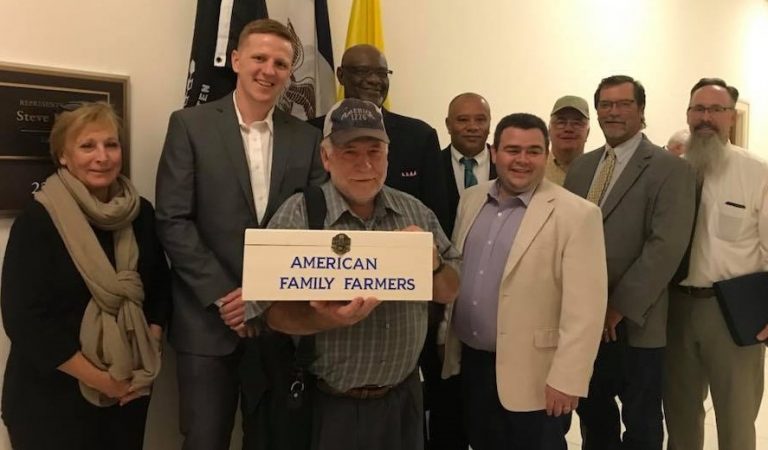
Policy Solutions
It doesn’t have to be like this. At the beginning of the 20th century, meatpackers controlled 55% of the market. After the P&S Act was introduced and enforced, that number dropped to 25% within a few decades. Well-enforced, strong policy ensured that most producers got a fair price for their livestock or poultry, and people still had food on their tables. This is the future that the Farm Action team envisions, and we know we can get there because it has been done before. But we need to go further, because this past version of prosperity often excluded historically disenfranchised groups including Black farmers. When we talk about producer protections, we need to build back better.
In 2020, then-USDA Secretary Sonny Perdue enacted diluted pieces of the original 2010 FFPRs, adding qualifiers to the undue and unreasonable preferences clause of the P&S Act. This new rule actually created safe harbors for corporations, not protections for producers — the opposite of the P&S Act’s most basic intentions. One of the changes provided that integrators and meatpackers can legally retaliate and give undue preference to producers with a “legitimate business justification.” This change has essentially enshrined abusive practices over the past few decades that have led to corporate profit. These Trump era rules must be thrown out. To date, the 2010 FFPRs contain the most comprehensive modern-day strengthening of the P&S Act. This is where we need to start as a minimum foundation for producer protection and antitrust enforcement.
But we can’t stop there. When ensuring that producers are treated fairly, and that all can share in the prosperity they’ve helped build, we need to go further than the 2010 FFPRs. Additional provisions must be added to these rules to make it clear that meatpackers cannot discriminate against producers based on race, color, national origin, religion, sex, gender identity (including gender expression), sexual orientation, disability, age, marital status, family/parental status, use of public benefits, political beliefs, participation in community organizing or civil rights activity.
In addition to rooting out discrimination, additional market safeguards proposed by the Western Organization of Resource Councils (WORC) would strengthen 2010 FFPRs protections and set out rules to build and maintain a fair market for producers. These “WORC Rules” would:
- Restrict packers from using forward contracts (forward contracts are agreements between two parties to buy or sell something at a specified price on a future date). Under the WORC rule, forward contracts would only be allowed with a firm base price and bidding in an open market.
- Bidding in an open market would also establish a truly value-based price discovery for both domestic and imported cattle.
- Finally, the WORC rule would also restrict packers from owning cattle and feeding cattle.
In order for all of these rule changes to have an impact, the way our government offices are set up and how they collaborate needs to be reset. The USDA needs to recommit to prioritizing antitrust enforcement and actively collaborate with the Department of Justice on a full antitrust review of meatpacking and integration giants. The P&S Act administration and enforcement authority which is currently housed within the AMS department in the USDA should be elevated to an undersecretary level in the USDA with restored funding and personnel.
So how do we make this happen? To start, the Biden administration must reject the damaging rules passed in the Trump era, and open up a new rulemaking process to give real producer protections a chance. When this happens, Farm Action will be there with the above policy recommendations to ensure that the administration understands the type of comprehensive protections producers need. There’s a lot that needs to be done, but the work is worth it. And it’s a big lift, so it can’t be done alone. We hope you’ll stand with us, but more importantly, we hope you’ll stand with the producers of your food who have been dealing with these corporate abuses for decades. With the right policies and momentum, we can build a just and resilient food system that respects our land, natural resources and neighbors here and around the world.
Written by Anna Straus; designed by Angela Huffman; edited by Angela Huffman, Joe Maxwell, and Emily Miller; concept developed by Joe Maxwell, Angela Huffman, and Anna Straus.



